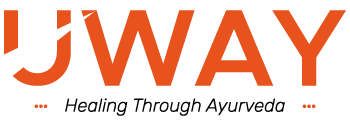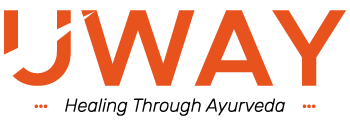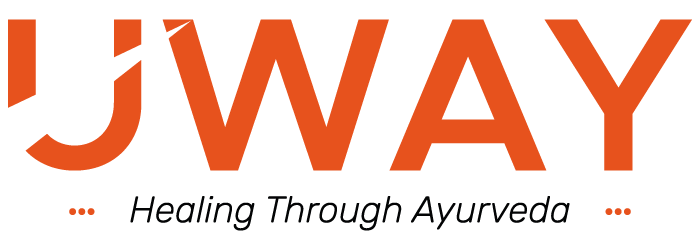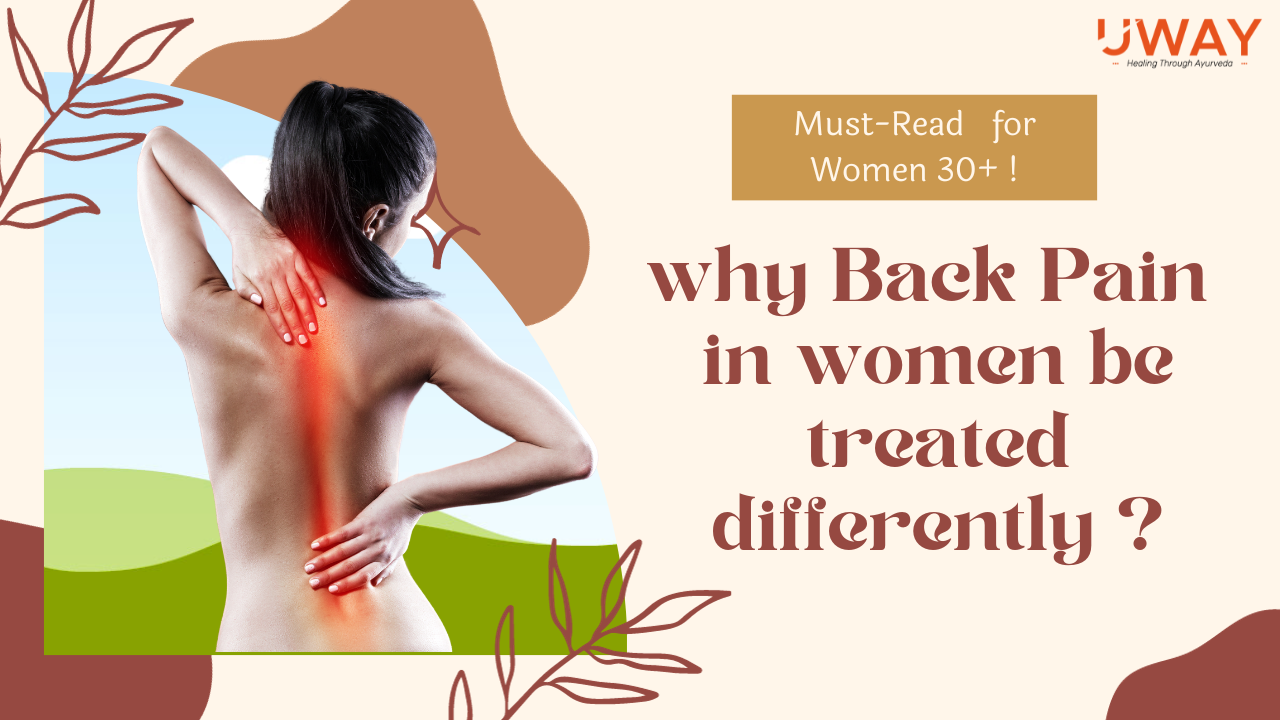Introduction:
In this article, we delve into the multifaceted factors that contribute to back pain in women. While some causes may be apparent, others often go unnoticed. Join us in discovering the importance of adopting a distinct approach to treat back pain in women, recognizing the nuances that set it apart from men’s back pain, and how Ayurveda is able to effectively treat Back Pain in women without side-effects.
At UWAY, we treat various stages of back pain both online and at our clinics. Though the physiological conditions are similar for men and women like disc bulge, prolaps, degeneration, herniation etc there are some special factors we need to consider when treating back pain in women, which makes it much more challenging than treating back pain in men.
Unique Challenges for Women in the 45-60 Age Group:
Prevalence of Back Pain:
Back pain is an increasingly common issue for women above the age of 45 in India, with a staggering 60% reporting back pain. This prevalence highlights the need for a targeted and comprehensive approach to address the unique challenges faced by women in this demographic.
Major symptoms include
- Aching sensations radiating down the legs
- Morning stiffness
- Increased discomfort during periods of sitting.
- Shooting pain while bending or lifting weights
What are the underlying contributory factors which cause back pain in women
Understanding the various Physiological, Hormonal, and Psychological Changes that occur during a woman’s life is crucial for understanding and tailoring effective back pain treatments in women. Though various types of accidents are also a contributory factor, we shall not delve into it in this article.
Physiological Changes:
- Women undergo significant physiological changes during this stage, including alterations in muscle tone, bone density, and joint flexibility. Recognizing and addressing these changes is pivotal for effective back pain management.
Hormonal Fluctuations:
- Hormonal shifts, especially during menopause, can contribute to back pain. Estrogen levels play a role in maintaining bone density, and their decline can lead to increased susceptibility to issues like osteoporosis.
Psychological Factors:
- The psychological impact of aging, coupled with societal expectations and body image concerns, can influence the perception and management of back pain in women. Incorporating mental health considerations is essential for holistic care.
Contributing Factors to Back Pain in Women:
A. Health Conditions:
Exploring specific health conditions that can contribute to or exacerbate back pain in women.
PCOD (Polycystic Ovary Syndrome):
- PCOD, a common hormonal disorder, can influence back pain through hormonal imbalances. Addressing PCOD is integral to comprehensive back pain management.
Uterine Fibroids:
- The presence of uterine fibroids can impact spinal health, potentially leading to discomfort and pain. Understanding this connection allows for targeted interventions.
Traumatic Injuries:
- Traumatic injuries, whether recent or from the past, can have long-term effects on the spine. Identifying and addressing these injuries is crucial for effective treatment.
B. Other Factors:
Exploring lifestyle and environmental factors that contribute to back pain in women.
Cysts or Growths Along the Spinal Cord:
- Cysts or growths along the spinal cord can impact nerve function and contribute to back pain.
Chronic Constipation:
- There is a strong link between chronic constipation and back discomfort, and most of the women overlook this. This emphasizes the importance of digestive health in overall well-being.
Piles (Hemorrhoids):
- Piles can influence back pain and one needs to explore treatments for managing both conditions simultaneously.
The Role of Overweight:
It’s crucial to recognize that weight plays a significant role in various health issues, and one common problem is back pain, especially among women who are overweight. Additionally, it’s essential to understand that being overweight or gaining weight can result from various underlying factors. Addressing these factors is key to achieving long-term and sustainable weight management. Quick weight reduction programs may worsen the problem rather than solving it. The focus should be on maintaining an optimal weight to effectively address the issue of back pain.
Importance of Maintaining Proper Sitting Postures:
This might seem like an obvious point, but it’s often underestimated. For women who spend long hours working, investing in a well-designed ergonomic chair is crucial to minimize strain on the spine. This holds true not only for home offices but is equally vital in workplace settings. It’s disheartening to observe that even in advanced industries such as IT, this aspect is not given the attention it deserves. The substantial number of working women seeking relief for back pain at our clinic in Bangalore serves as a stark reminder of this oversight. Emphasizing the importance of adopting ergonomic sitting postures is not just a suggestion; it’s a necessity to prevent undue stress on the spine and promote overall back health.
Lack of Exercise:
Recognizing the detrimental effects of a sedentary lifestyle, it becomes imperative to incorporate regular exercise into daily routines for women. Practical recommendations include exercises that focus on strengthening the core muscles, improving flexibility, and promoting overall body awareness. By addressing the sedentary aspects of modern living through a proactive approach to exercise, women can enhance their back health, reduce the risk of pain, and cultivate a foundation for long-term well-being.
Incorporating Yoga into your life is perhaps the most effective way to compact back issues.
Hormonal Changes:
- Hormonal changes during menopause can contribute to back pain in women due to fluctuations in estrogen levels. Estrogen plays a crucial role in maintaining bone density, and as its levels decline during menopause, women become more susceptible to conditions like osteoporosis, which can lead to back pain. Additionally, hormonal imbalances may affect the elasticity and strength of connective tissues in the spine, potentially causing discomfort and pain. It’s essential to note that the interplay of hormones in the female body is intricate, and individual experiences may vary.
III. Ayurvedic Perspective on Back Pain:
A. Vatha Dosha and Back Pain:
Exploring Ayurvedic principles to understand the root causes of back pain.
Understanding the Role of Vatha Dosha in BackPain in women:
- According to Ayurveda back pain often stems from an aggravated wind element known as the Vatha Dosha. Lets look at the characteristics of Vatha Dosha and its impact on the spine.
- Vatha Dosha Traits:
- Dryness
- Coldness
- Lightness
- Mobility
When Vatha Dosha becomes imbalanced, it disrupts the harmony in the body, leading to various issues, including those affecting the spine:
- Effects on the Body:
- Dryness in tissues
- Depletion of fluids
- Bone degeneration
- Inflammation in joints, including the spine
- Impact on the Spine:
The spine, a crucial part of the musculoskeletal system, is particularly vulnerable to the effects of an aggravated Vatha Dosha. Let’s understand how this imbalance affects the spine:
- Reduced Lubrication:
- Dryness linked to Vatha Dosha can reduce lubrication between vertebral discs.
- Results in stiffness, decreased flexibility, and discomfort.
- Fluid depletion, bone degeneration, and joint inflammation.
- Cold and Mobile Qualities:
- The cold and mobile nature of Vatha Dosha can contribute to a lack of warmth in affected areas.
- Potential hindrance to blood circulation and nutrient supply to the spine.
Optimizing Back Pain Management in Women: A Two-Pronged Strategy
To effectively manage back pain in women, adopting a comprehensive two-pronged strategy is paramount. This approach primarily revolves around considering key factors, prioritizing the reduction of inflammation, and subsequently focusing on long-term management by addressing underlying causative factors.
Key Factors Considered:
- Age of the patient
- Physical structure
- Hereditary factors
- Lifestyle
- Addressing Pain Due to Internal Inflammation:
In the initial phase of treatment, our protocol centers on alleviating internal inflammation to reduce pain. This involves a combination of oral medications and the application of medicated oils to the affected areas. Therapies such as Kati Vasti, Kaadidhara, local Patrapotala Sweda, among others, are recommended based on the patient’s condition. These therapies aim to pacify the agitated Vayu Dosha, restoring equilibrium, and providing relief from inflammation and back pain. Additionally, medicated enemas administered over eight, fifteen, or thirty days can offer further relief.
- Long-Term Management:
Addressing the underlying causative factors becomes the focus of the second phase of treatment, which follows the alleviation of inflammation. This stage is highly personalized, varying from patient to patient based on causative factors. Long-term management involves simple oral and external medications alongside lifestyle modifications. The tailored approach ensures sustained relief, promoting overall well-being.
By adopting this two-pronged strategy, we not only target immediate pain relief by addressing inflammation but also prioritize long-term solutions tailored to each individual’s unique needs.
IV. Effective Strategies for Management and Prevention:
Lifestyle Modifications & Diet
Ayurveda highlights the significance of lifestyle modifications and dietary adjustments in managing back pain. These modifications can either complement the treatment plan or stand alone as effective measures. While a customized diet plan is recommended based on the patient’s specific condition, adopting certain fundamental dietary principles for back pain can yield noticeable results within two weeks
Dos (Pathya Foods):
- Wheat
- Rice
- Black gram
- Drumstick
- Brinjal
- Garlic
- Ghee
- Milk
- Buttermilk
- Sweet and sour substances
Don’ts (Apathya Foods):
- Bitter, astringent, and pungent foods
- Cold water and beverages
- Dryness-causing foods
- Specific vegetables like spinach and cucumber
Yoga & Exercise
When selecting yoga posters for women with back pain, it’s essential to focus on poses that promote flexibility, strength, and relaxation while being gentle on the spine. Here are some beneficial yoga poses for women with back pain.
However, please understand that these are not universally applicable to all and need to be tailored according to each individual. Women, especially with chronic back issues should consult a doctor before incorporating yoga.
- Child’s Pose (Balasana):
Promotes relaxation and gently stretches the back.
- Cat-Cow Stretch (Marjaryasana-Bitilasana):
Improves spinal flexibility and relieves tension.
- Downward-Facing Dog (Adho Mukha Svanasana):
Strengthens the entire body, including the back muscles.
- Cobra Pose (Bhujangasana):
Strengthens the lower back and improves flexibility.
- Bridge Pose (Setu Bandhasana):
Strengthens the back, thighs, and buttocks.
- Puppy Pose (Uttana Shishosana):
Stretches the spine gently and opens the chest.
- Legs Up the Wall Pose (Viparita Karani):
Relieves lower back tension and promotes relaxation.
- Child’s Pose with Side Stretch:
Offers a gentle stretch to the sides of the torso, easing tension in the back.
- Modified Boat Pose (Supta Paripurna Navasana):
Strengthens the core without straining the back.
- Thread the Needle Pose (Parsva Balasana):
Releases tension in the spine and shoulders.
Conclusion:
In summary, effectively addressing back pain in women, particularly within the 45-60 age group, requires a thorough and multifaceted strategy. This involves consideration of physiological, hormonal, and psychological factors. It’s important to note that Ayurveda doesn’t offer miraculous drugs or therapies. While alleviating internal inflammation may provide symptomatic relief, a sustainable long-term management approach involves addressing the detailed causative factors we’ve discussed.
FAQ’s
1. How effective is Ayurvedic treatment for women’s back pain compared to conventional methods?
Ayurvedic treatments adopt a multi-pronged approach targeting inflammatory issues and underlying causes, providing sustainable relief. While responses may vary, many individuals experience an astonishing 90% success rate in managing and preventing back pain with Ayurveda.
2. Can Ayurvedic treatment prevent surgery in back pain issues?
A majority of patients seeking UWAY Health’s assistance have either found limited relief from existing treatments or have been advised surgery. Ayurveda is highly effective in handling degenerative disc issues and supports long-term management without the need for surgery.
3. Are Ayurvedic treatments for back pain in women safe?
Ayurvedic treatments primarily use natural remedies, ensuring safety. However, it’s crucial to consult qualified practitioners for personalized and safe treatments. At UWAY, we adhere to traditional Kerala Ayurveda medical protocols aided by modern diagnostics for better patient outcomes.
4. Can Ayurvedic treatments provide both immediate relief and long-term management for back pain in women?
Yes, Ayurvedic treatments adopt a two-pronged strategy, initially addressing immediate pain relief by reducing inflammation. Subsequently, the focus shifts to long-term solutions tailored to individual needs, ensuring holistic relief.
5. Can women incorporate yoga into their routine to manage back pain with Ayurveda?
Absolutely, Ayurveda promotes incorporating yoga into daily routines, offering specific poses that enhance flexibility, strength, and relaxation. However, it’s advisable to consult a physician before incorporating these routines.
6. Is Ayurveda back pain treatment expensive?
The cost factor in Ayurvedic treatment varies but when considering Kerala Ayurveda protocols, the total cost for long-term management is comparably lower than alternatives. At UWAY, our aim is to manage women’s back pain with simple Ayurvedic medicines and lifestyle modifications, making it a cost-effective solution.



